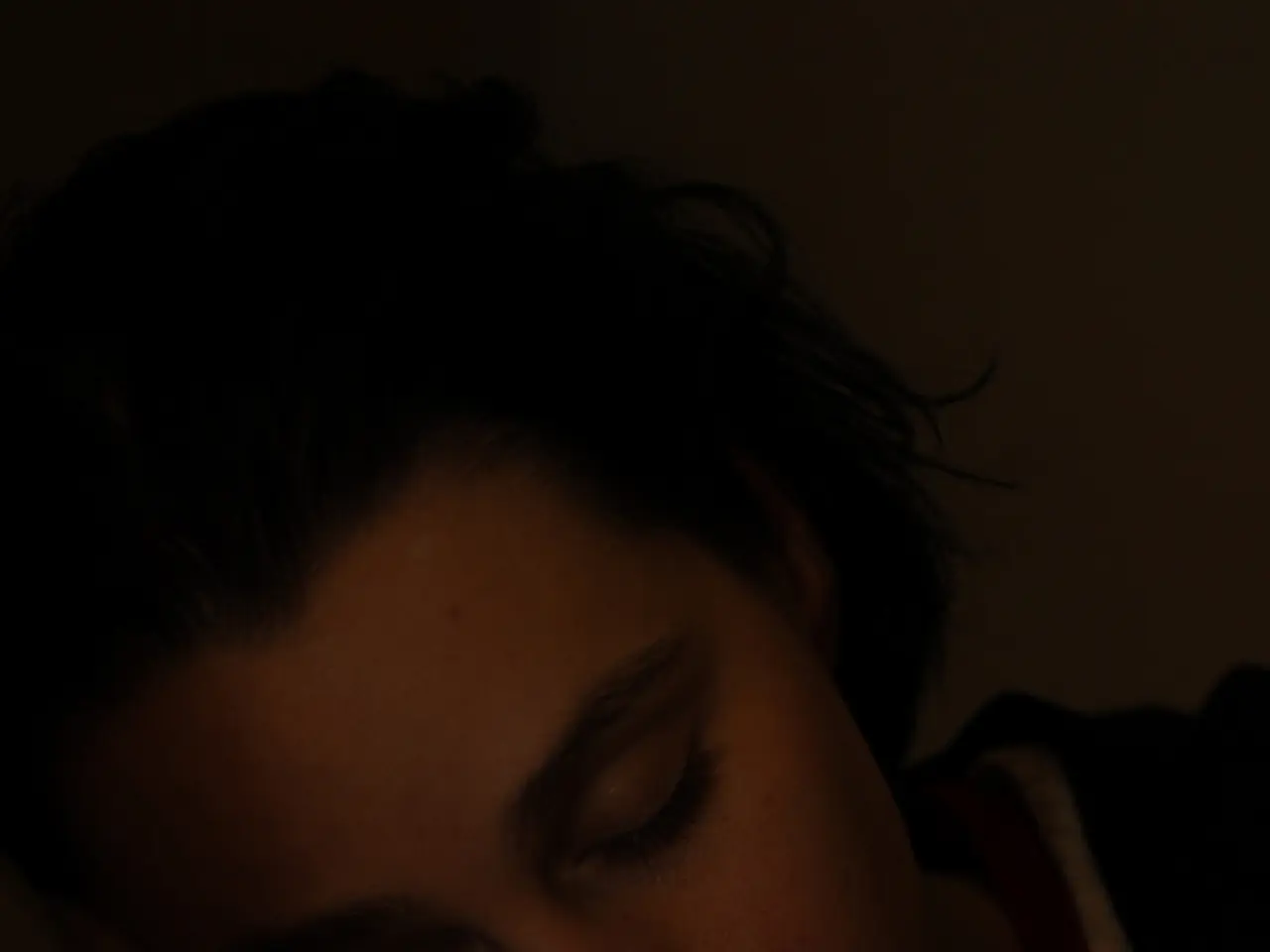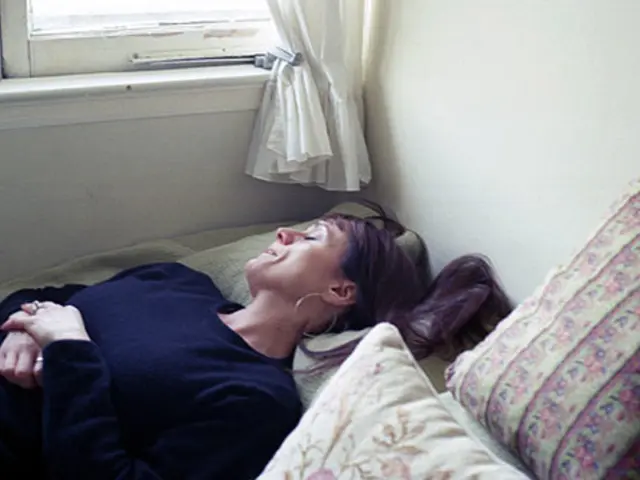Uncovering Nocturnal Wandering: Understanding Its Causes!
Stepping into the Mystery: A Deep Dive into Sleepwalking
Ever seen someone shuffling around in their sleep, eyes wide open but lost in another realm? That's sleepwalking, baby! A phenomenon that's equal parts fascinating and weird, it's one of the many quirks the human body has up its sleeve. Let's unravel the science behind this peculiar behavior and dig deeper into why we do it.
"Snoozing Through the Nocturnal Mystery: An Intro to Sleepwalking"
Sleepwalking, or somnambulism, is a condition that occurs during deep stages of sleep, characterizing complex actions like walking or performing tasks while still sleeping. It can range from staring blankly to wandering aimlessly around the house, or even stepping outside for a late-night stroll-all while sound asleep.
Sleepwalking tends to affect children more than adults, but it doesn't exclude us older folks. Common triggers include stress, sleep deprivation, and certain medications or sleep disorders. You might be surprised to learn that up to one-third of kids between ages 2-13 experience sleepwalking at least once, but most outgrow it by their teenage years.
"The Why Behind the Wander: Exploring Sleepwalking Causes"
Sleepwalking isn't just some wacky urban legend. It's backed by science! There are several causes that could explain why we take a midnight walk while our minds are peacefully dreaming. Let's dive into the main culprits:
- Whack-a-Mole with Sleep PatternsSleepwalking usually pops up during the non-rapid eye movement (NREM) stages of deep sleep. Any disruptions to these crucial stages can result in sleepwalking, as your body gets a temporary "disconnect" between brain and body functions.
- It Runs in the Family: The Genetic LinkThere's a strong chance you'll sleepwalk if you've got a family history of it. Studies show that sleepwalking tends to run in families, with 30-50% of sleepwalkers reporting a sleep-strolling relative.
- Riding the Wave of Stress and AnxietyHigh levels of stress or anxiety can lead to sleepwalking, particularly in adults. These emotions can mess with your sleep cycle, creating the perfect conditions for a sleepwalking episode to occur.
- Rest Easy: The Importance of Good SleepSleep deprivation is another major sleepwalking trigger that can develop when your body's constantly trying to catch up on rest. When you're not getting enough sleep, your brain might skip some essential stages, which can cause sleepwalking.
- Other Suspects: Medications and Sleep DisordersCertain medications, sleep disorders like sleep apnea or restless leg syndrome, and even medical conditions like neurodegenerative diseases can up the likelihood of sleepwalking.
"The Science of Sleepwalking: What Happens in Your Brain?"
During sleep, your brain goes through various stages, each with its own purpose. During the deepest stages, your brain engages in vital functions like breathing and temperature regulation but is less active in conscious thought.
Sleepwalking happens when your brain's in a sort of limbo-half-asleep, half-awake. The portion responsible for higher-level thinking and consciousness is still out cold, while the regions that control basic motor functions remain alert. This disconnect results in your body moving without any conscious control, like navigating through a dream while your legs are still walking.
"When Nodding Off Takes a Dark Turn: The Risks and Dangers of Sleepwalking"
Despite its eerie nature, sleepwalking can be dangerous. Since sleepwalkers are unaware of their actions, accidents can happen. They might bump into furniture, trip, or even leave the house, sometimes in the middle of the night for an unknown adventure. More extreme cases have involved sleepwalkers getting behind the wheel, though such instances are rare and extremely hazardous.
"Walk This Way: Coping with Sleepwalking for Sleepwalkers and their Families"
If you find yourself sleep-strolling or if a loved one is having episodes, there are steps you can take to minimize the occurrences and ensure safety:
- Better Sleep HygieneImproving sleep habits is an effective way to reduce sleepwalking. Create a consistent sleep schedule, avoid caffeine, electronics before bed, and establish a relaxing bedtime routine.
- Creating a Protected SpaceMake sure your home environment is safe for sleepwalkers. Remove objects that could be potentially harmful, lock doors, and secure windows to minimize the risk of injuries.
- Managing StressUse relaxation techniques like meditation, deep breathing, or yoga to lower stress levels, which can reduce sleepwalking episodes.
- Expert AdviceIf sleepwalking becomes frequent or dangerous, consult a sleep specialist. They may recommend therapy, treatments, or medications tailored to your specific needs.
"Final Thoughts: A Nightmare Solution or a Curious Coincidence? Exploring Sleepwalking"
Sleepwalking might seem like a strange and inexplicable behavior, but understanding its causes and effects can help you manage it. Whether it's genetic, environmental, or psychological, making changes to your bedtime routine, environment, and stress levels can all help reduce episodes. So, if you or someone you love sleepwalks, don't worry-with a few adjustments, those nighttime escapades can be a thing of the past. Sweet dreams!
Enrichment Data:- Sleepwalking typically occurs during deep NREM sleep and involves purposeful movements while experiencing partial wakefulness from deep sleep[1][5].- Sleepwalking can be triggered by genetic, environmental, and psychological factors like sleep deprivation, stress, anxiety, and certain medications and sleep disorders[2][3][4].- Treatment involves improving sleep hygiene, managing stress, addressing underlying sleep disorders, implementing safety measures, and in some cases, medication under medical supervision[2].- Sleepwalking episodes can sometimes be remembered, and the behavior is often motivated rather than random, debunking some common myths[3].- The consequences of sleepwalking can impact daytime functioning, emphasizing the importance of proper treatment[3].
"Sleepwalking, although seemingly peculiar, is not only a curiosity; it can be a malady rooted in various factors such as emotions, sleep patterns, genetics, and your overall health-and-wellness. Its profound connection to dreams arises from the transition stage where your brain hovers between wakefulness and slumber."
"To manage or avoid sleepwalking episodes, dreams of strolling aimlessly at night can be turned into nights of peaceful slumber through enhancing sleep hygiene, maintaining a balanced emotional state, and ensuring a safe and secure sleeping environment."








